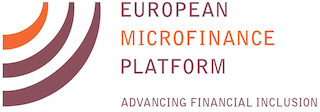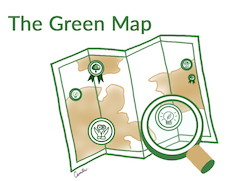 As the inclusive finance sector increasingly understands the crucial role it can have in supporting the most vulnerable populations – who are disproportionately affected by the consequences of climate change – the European Microfinance Platform (e-MFP) is delighted to announce the launch of the Green Map, a project implemented by the e-MFP Green Inclusive and Climate Smart Finance Action Group (GICSF-AG) and supported by the Government of the Grand-Duchy of Luxembourg. The Green Map was officially launched on Thursday, September 28 at an in-person and live-streamed event entitled “Addressing Climate Change via an Open Resource for Green Inclusive Finance Projects & Practices.”
As the inclusive finance sector increasingly understands the crucial role it can have in supporting the most vulnerable populations – who are disproportionately affected by the consequences of climate change – the European Microfinance Platform (e-MFP) is delighted to announce the launch of the Green Map, a project implemented by the e-MFP Green Inclusive and Climate Smart Finance Action Group (GICSF-AG) and supported by the Government of the Grand-Duchy of Luxembourg. The Green Map was officially launched on Thursday, September 28 at an in-person and live-streamed event entitled “Addressing Climate Change via an Open Resource for Green Inclusive Finance Projects & Practices.”
What’s this all for? The Green Map project aims to fill an information gap. While there are resources available on the broad topic of green inclusive finance (for example, the comprehensive CERISE+SPTF SPI resources), and new projects are being developed by all types of stakeholders, it is still a challenge for most FSPs and other actors to access structured information on what is going on in the field and where can they draw inspiration to guide their own journeys in green.
What is the GICSF-AG, and what is the Green Map?
The e-MFP GICSF-AG was created in 2013 and has since become a unique multi-stakeholder think tank, bringing together inclusive finance practitioners to discuss, exchange experiences, and agree on common practices and standards to address environmental issues. Since the creation of the Action Group, green inclusive finance has been a key area of work for e-MFP (and indeed for its members, as evidenced by the results in the Financial Inclusion Compass 2023 survey, to be published in November). The topic is featured – increasingly – in every European Microfinance Week, and there have been several publications produced as well as webinars and other events organised. Additionally, in 2014 and 2019, the European Microfinance Award (EMA), co-organised by e-MFP together with the Luxembourg Ministry of Foreign and European Affairs – Directorate for Development Cooperation and Humanitarian Affairs and InFiNe.lu, focused on the topic of green inclusive finance.
In every EMA edition, e-MFP produces a publication that compiles the good practices identified throughout the Award selection process, and the 2019 publication Adapting to a New Normal, although well received, cannot fully capture the phenomenal advances that have been made in this sector in recent years.
As the name implies, the Green Map is a map of green inclusive finance examples, but one that not only identifies the FSPs’ and projects’ geographic distribution but also opens the door to the green inclusive finance experience of the institutions through their profiles and, in selected cases, deep dives into elements of that experience through specific case studies.
The map and associated resources are available through a digital platform prepared by e-MFP and GICSF-AG, with the technical support of Alfonso Caiazzo and the HEDERA team. The platform houses relevant examples of green inclusive finance practices from institutions across the world collected by a team of consultants. (The project, led by Isabelle Barrès, was implemented by Caroline Brandt (of Horus Development Finance), Juana Ramirez and Silvia Recupero. The project depended on the expertise of the two Heads of the e-MFP GICSF-AG, Davide Forcella and Natalia Realpe Carrillo, and the e-MFP Secretariat team members (Joana Afonso, Camille Dassy, Niamh Waters, Gabriela Erice and Fernando Naranjo) who coordinated, promoted and otherwise supported the work.)
To date, the Green Map includes green profiles for 28 FSPs and seven regional projects. The information is structured along the standards and essential practices of the Green Index 3.0, an environmental performance assessment tool created in 2014 by the e-MFP GICSF-AG and updated in 2022 to its current version. The Green Index 3.0 framework is aligned with Dimension 7 of the Universal Standards for Social and Environmental Performance Management (USSEPM) and focuses on three main concepts: vulnerability to climate change; adverse impacts on the environment; and green economic opportunities – all three of which apply to both institutions and clients, in terms of both risks and opportunities.
In addition, for 15 of the participant FSPs, a case study – focused on a specific essential practice – offers a closer look at the activities implemented and the journey to implement them – as well as the challenges that arose and the strategies used to overcome those challenges.
 Why the Green Map matters – now and tomorrow…
Why the Green Map matters – now and tomorrow…
The Green Map project builds on the previous work of the e-MFP GICSF-AG and responds to two clear sector needs: first, raising awareness and understanding of what green inclusive finance is about; and second, providing an open resource in which to find structured information on existing initiatives on green inclusive finance and on the lessons learned from pilot initiatives already finalised.
The long-term goal is that the Green Map platform becomes a valuable resource for all sector stakeholders, complementing other available resources and contributing to the achievement of the triple bottom line goals – social, financial and environmental – of the inclusive finance sector. Being based on the exchange of experiences and the contributions of the FSPs and other actors, the practices showcased in the projects are drawn from grassroots experiences, while being aspirational as well. These practices will provide guidance for FSPs looking to design and implement a green strategy and showcase those institutions that have taken these first important steps, for whom the Green Map will be not only a source of information but an opportunity to give visibility to their work.
What’s next?
Now that this new resource has been launched, the goal will be ensuring the continuity, value and usage of the tool – and the participation of many more FSPs and stakeholders. This will involve developing partnerships with other infrastructure organisations and networks to promote and support the participation of FSPs, capitalising on the experiences shared to promote peer and multi-stakeholder discussion, and using the information collected as learning materials for both practitioners and academia – for teaching and research alike.
We at e-MFP and the Action Group are extremely proud of this new tool, which we know will provide enormous value to the sector in addressing what we believe is a profound need. We invite you to explore the Green Map, and we welcome all feedback to allow us to iteratively improve it as we move forward.
The authors of this report, Joana Afonso and Sam Mendelson, are Financial Inclusion Specialists at e-MFP, and Joana coordinates all of e-MFP’s Action Groups. The report is part of a sponsored series on European Microfinance Week 2023, which will be held from November 15 to November 17 in Luxembourg and online. MicroCapital has been engaged to promote and report on the event each year since 2012. You may register for European Microfinance Week at https://www.emw2023.eu/.
Additional Resources
Green Map webpage
https://e-mfp-green-map.hedera.online/
GICSF-AG webpage
https://www.e-mfp.eu/gicsf-ag-0
European Microfinance Week 2023 homepage
https://www.emw2023.eu/
European Microfinance Award homepage
https://www.european-microfinance-award.com/
MicroCapital coverage of European Microfinance Week since 2012, including the European Microfinance Award
https://www.microcapital.org/category/european-microfinance-week/
Similar Posts:
- MICROFINANCE PAPER WRAP-UP: “State of the Art of Green Inclusive Finance 2011-2019: Worldwide Status and Progress Over 10 Years,” by e-MFP Green Inclusive and Climate Smart Finance Action Group
- SPECIAL REPORT: e-MFP Green Inclusive and Climate Smart Finance Action Group Focuses on Capacity Building
- SPECIAL REPORT: Green Action Group Celebrates 10th Anniversary at European Microfinance Week #EMW2023
- MICROFINANCE EVENT: European Microfinance Week; November 15-17, 2023; Luxembourg
- SPECIAL REPORT: European Microfinance Week 2023 Opens With Action Group Meetings, Including Investors Sharing Strategies for Measuring Social Performance #EMW2023
